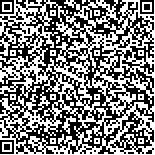| 引用本文: | 沈雁,王章流,郑华君,钟继红,徐磊,江向红,倪思忆,李思.盐酸小檗碱对溃疡性结肠炎小鼠结肠黏膜机械屏障的保护作用[J].中国现代应用药学,2018,35(12):1765-1770. |
| SHEN Yan,WANG Zhangliu,ZHENG Huajun,ZHONG Jihong,XU Lei,JIANG Xianghong,NI Siyi,LI Si.Protective Effects of Berberine Hydrochloride on the Intestinal Mucosal Mechanical Barrier in Mice with Ulcerative Colitis[J].Chin J Mod Appl Pharm(中国现代应用药学),2018,35(12):1765-1770. |
|
| |
|
|
| 本文已被:浏览 2543次 下载 1545次 |

码上扫一扫! |
|
|
| 盐酸小檗碱对溃疡性结肠炎小鼠结肠黏膜机械屏障的保护作用 |
|
沈雁1, 王章流1, 郑华君1, 钟继红1, 徐磊1, 江向红1, 倪思忆1, 李思2
|
|
1.浙江中医药大学附属第二医院消化内科, 杭州 310005;2.浙江省立同德医院儿科, 杭州 310012
|
|
| 摘要: |
| 目的 观察盐酸小檗碱(berberine hydrochloride,BBR)对溃疡性结肠炎(ulcerative colitis,UC)小鼠结肠黏膜机械屏障的干预作用,探讨其治疗UC的可能机制。方法 BALB/c小鼠随机分为空白对照组,模型对照组,BBR低、中、高剂量组和柳氮磺吡啶阳性对照组。采用右旋葡聚糖硫酸钠(DSS)法复制UC小鼠模型后,灌胃给药7 d。每天观察小鼠一般情况并评估疾病活动指数(DAI);末次给药后解剖取结肠组织,切片、HE染色观察组织的病理学变化;Western blot法测定肠道干细胞标志物LGR-5和TERT的含量;免疫组化SP法检测紧密连接蛋白claudin-1、occludin和ZO-1的表达水平。结果 与模型对照组比较,BBR治疗组小鼠结肠炎的临床表现和结肠组织病理表现明显改善,DAI评分下降;经中、高剂量BBR治疗后,UC小鼠结肠组织中LGR-5、TERT和紧密连接蛋白claudin-1、occludin和ZO-1的表达水平均较模型对照组明显升高,差异有统计学意义。结论 BBR能有效减轻UC小鼠的结肠炎症,其机制可能与其抑制肠道干细胞和紧密连接蛋白的破坏、保护肠黏膜机械屏障稳态有关。 |
| 关键词: 小檗碱 溃疡性结肠炎 肠黏膜机械屏障 肠道干细胞 紧密连接蛋白 |
| DOI:10.13748/j.cnki.issn1007-7693.2018.12.003 |
| 分类号:R965.1 |
| 基金项目:浙江省医药卫生科技计划项目(2016KYB223);浙江省中医药科技计划项目(2015ZB066) |
|
| Protective Effects of Berberine Hydrochloride on the Intestinal Mucosal Mechanical Barrier in Mice with Ulcerative Colitis |
|
SHEN Yan1, WANG Zhangliu1, ZHENG Huajun1, ZHONG Jihong1, XU Lei1, JIANG Xianghong1, NI Siyi1, LI Si2
|
|
1.Department of Gastroenterology, The Second Affiliated Hospital of Zhejiang Chinese Medical University, Hangzhou 310005, China;2.Deportment of Pediatrics, Tongde Hospital of Zhejiang Province, Hangzhou 310012, China
|
| Abstract: |
| OBJECTIVE To observe the effects of berberine hydrochloride(BBR) on the colonic mucosal mechanical barrier in mice with ulcerative colitis(UC), and to explore the possible mechanisms of its therapeutic effects on UC. METHODS BALB/c mice were randomly divided into blank control group, model control group, low dose BBR group, middle dose BBR group, high dose BBR group and salazosulfapyridine positive control group. UC mouse model was established by dextran sulphate sodium(DSS), and then daily gavage administration was given for 7 days. During the course of experiment, the general conditions of mice were observed, and disease activity index(DAI) were assessed. At the end of treatment, colon tissue were sectioned and HE stained, and its pathological changes were observed under light microscope, the contents of LGR-5 and TERT were determined by Western blot, the expression level of claudin-1, occludin and ZO-1 were detected by immunohistochemical method. RESULTS Compared with model control group, the clinical and pathological symptoms of colitis in BBR groups were improved greatly, with their DAI were all decreased. After middle or high dose BBR treatment, the expression levels of LGR-5, TERT, claudin-1, occludin and ZO-1 of colonic tissue in UC mice were all increased when comparing with model control group, whose difference were statistically significant. CONCLUSION BBR can effectively relieve colitis in UC mice, the mechanism may be ralated to keeping the steady state of intestinal mucosal barrier by suppressing the destruction of intestines stem cells and tight junction proteins. |
| Key words: berberine ulcerative colitis intestinal mucosal mechanical barrier intestinal stem cells tight junction proteins |
|
|
|
|
